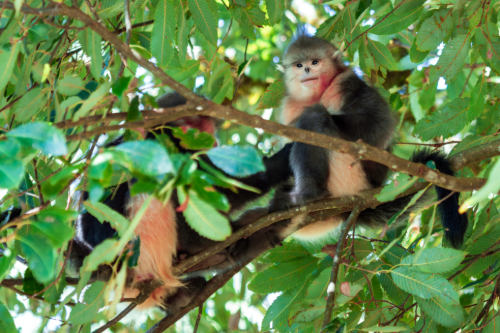Unveiling Fragrant Bacteria and Flower Dwelling Yeasts
Posted on March 1, 2024 by Clare Baker
Each month, the Microbiology Society publishes the International Journal of Systematic and Evolutionary Microbiology, which details newly discovered species of bacteria, fungi and protists. Here are some of the new species that have been discovered and the places they've been found.
Shall we start this month’s edition of ‘New to Science’ with something strong - a strong smell perhaps? Our first species are three new editions to the genus Flavobacterium, which were isolated from activated sludge. Activated sludge is aerated sewage which, in this case, was collected from an industrial wastewater treatment plant in Shandong Province, PR China. The three new Gram-stain-negative, rod-shaped, non-spore-forming bacteria are named Flavobacterium odoriferum, Flavobacterium fragile and Flavobacterium luminosum. The authors must’ve known about our smell theme in advance, as one of our microbes, F. odoriferum, derives its name from the word ‘fragrant’.
Next up, we have Paenibacillus baimaensis, a novel bacterium isolated from mountain soil in the habitat of Rhinopithecus bieti, which is also known as the black-and-white snub-nosed monkey. These funny-looking primates are highly endangered, so researchers were looking to find out more about the microbial diversity of both their gut and their habitat. They discovered our novel microbe when sampling the soil of Baima Snow Mountain in China, from which the bacteria earned its name.

Let’s stay in Cina for our next new microbe. Chitiniphilus purpureus, a Gram-stain-negative, rod-shaped and chitin-degrading strain was isolated from crawfish pond sediment in Wuhan City, Hubei Province, PR China. Chitin is an abundant, strong and natural carbohydrate that can be widely developed and utilised for renewable products, but crystalline chitin is rigid and highly insoluble. However, our novel microbe might be able to help with that, thanks to its ability to produce chitinase, an enzyme that can break down chitin. This helps manufacturers to produce biodegradable, biocompatible and non-toxic products that can be used in food, pharmaceutical and agricultural industries.
During the analysis of Pseudomonas strains linked to an outbreak in an intensive care unit at King Faisal Specialist Hospital and Research Center, Saudi Arabia in 2019, a new member of the Stenotrophomonas genus was identified. Our new bacteria, Stenotrophomonas riyadhensis, which was isolated from a hospital floor swab, was initially misidentified as Pseudomonas aeruginosa, but whole genome sequencing revealed its true identity.
And finally, something a little rare for ‘New to Science’. We often find new bacterial species, but other microbes don’t often get the limelight. Well, that is going to change this week as we’ll explore the discovery of two novel yeast species. Starmerella gilliamiae and Starmerella monicapupoae are two novel yeast species isolated during studies on yeasts associated with flowers, fruits, plant tissues and bees in Brazil, Argentina, Chile and Canada. Two isolates of S. monicapupoae were obtained from flowers in Brazil and named in honour of Mônica Tallarico Pupo in recognition of her contribution to studies on microbial interactions with stingless bees in Brazil. Our other yeast, S. gilliamiae, can be found all over, having been isolated from flowers in Brazil and Chile, a fruit from Argentina and a bumblebee from Canada. S. gilliamiae is named in honour of Martha Gilliam, in recognition of her contributions to the study of microorganisms associated with bees.

